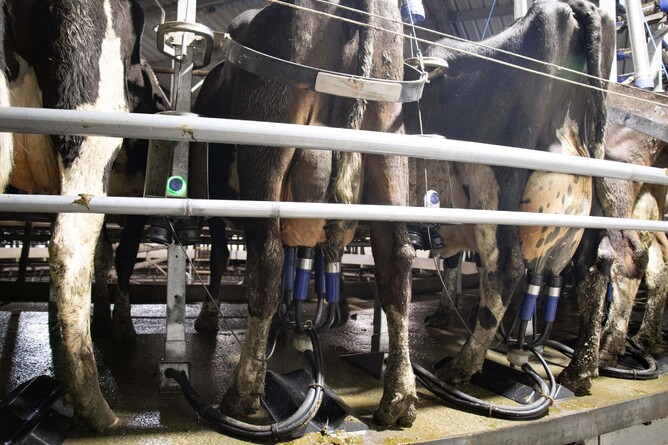BVD bulk tank antibody results for most of our dairy clients seem to be generally dropping, which means herd testing has had a positive influence on the amount of BVD circulating in our local herds.
We’ve made a graph of the last 10 farm’s results that have come over the desk, to take a look at any trends.
Of these farms, two have had BVD antigen positive years, which they would not have picked up on as quickly without bulk tank testing.
Farm 2 vaccinates against BVD to lower their risk. The vaccine shows up on the antibody test, which indicates this herd has immunity to BVD.
The BVD steering committee in New Zealand – who would love to see BVD be eradicated from our country – suggests that with plans put in place to manage BVD, it should be eliminated from most farms within five years.
This is through testing on dairy farms, and testing and vaccinating on beef farms. They have calculated a benefit-to-cost ratio of 2:1 for both dairy and beef herds using the following annual protocols.
Dairy herds: Perform an annual bulk milk tank Ag PCR and Ab ELIZA monitoring programme. This is to pick up if any persistently infected (PI) cows (BVD carriers) are introduced to the herd or if the virus is circulating. Test replacement calves early so any PI calves are found and not kept.
Beef herds: Vaccinate heifers and cows prior to mating to reduce the likelihood of any PI calves being born. Beef calves are not generally handled as early as dairy calves – and we cannot do a bulk milk test on the cows – so the cost effective way of eradicating it from a beef herd is by doing a pooled antibody test from a proportion of the calves (around 20), to see if there is BVD circulating. If there is, further testing would be required.
For both types of farm, double fencing the boundary will reduce the risk of new infections being introduced from neighbouring stock.
Bulls should all be blood tested for BVD and vaccinated prior to mating, as they pose a large risk of spreading the disease, especially at this critical time.
If the vaccine is used, a booster should be given 2-4 weeks prior to mating to help prevent BVD affecting the pregnancy (i.e. early embryonic loss, abortion, stillbirth) and reduce the risk of a PI calf being born. This will also make it less risky for heifers to be out grazing with other mobs during this time.
We are happy with the progress our clients are making towards lowering the BVD in their herds. Encourage your neighbours to also be on board with regular testing, and your dairy graziers to ask their clients if they test. This could make the risk to everyone’s stock reduce – and make the likelihood of eradicating this disease from New Zealand closer to reality!


